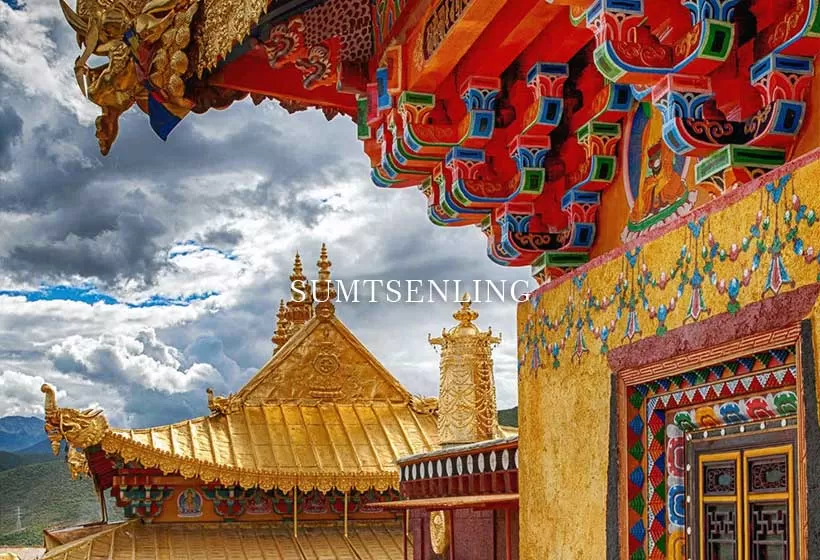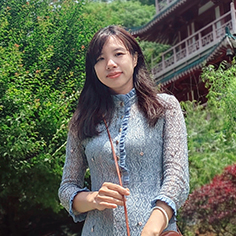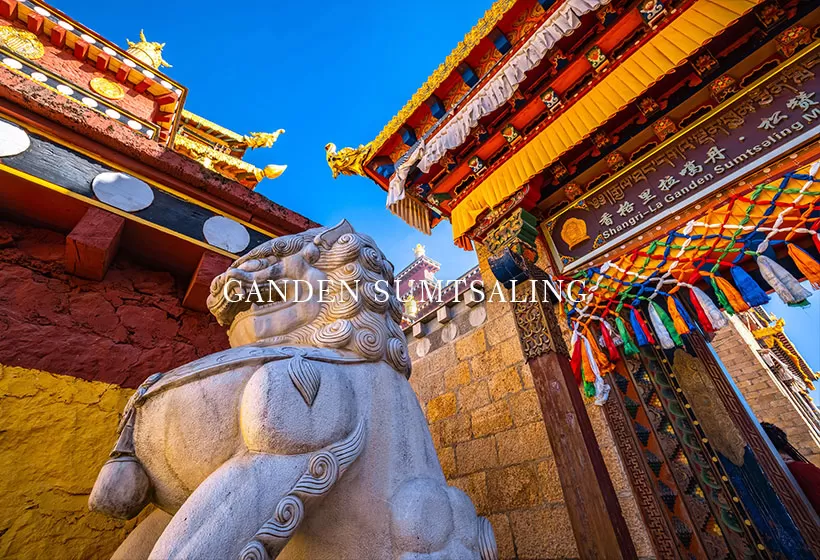Short Introduction to Shangri-La Local Culture: History, Nation, Diet, Clothing, etc
The Tibetan name "Shangri-La" means "Sun and Moon in the Heart." Shangri-La City, formerly known as Zhongdian County, is called "Jiantang" in Tibetan.
In 1933, Shangri-La was depicted as an eternally peaceful and tranquil place by British author James Hilton.
Due to its location at the intersection of Sichuan, Yunnan, and Tibet, it is an important site on the Ancient Tea Horse Road, the total population is approximately 186,400, the indigenous population is 80% Tibetan, along with 26 other ethnic minorities such as the Bai, Naxi, and Lisu. With a history of over 1,300 years, Shangri-La is rich in Tibetan culture. It has also absorbed the excellent cultural elements of other ethnic groups. This includes traditional festivals, music and dance, ethnic clothing, and a diverse culinary culture.
Brief History
Shangri-La with a history of over 1,300 years,
Since the Han Dynasty, this area has been known as the land where the Qiang people lived with yaks,
During the Tang Dynasty, Shangri-La was important location on the Ancient Tea Horse Road. In 1726, during the Qing Dynasty, it was under the jurisdiction of Lijiang Prefecture.
In 1913, during the Republic of China, it became Zhongdian County.
In 2001, it was renamed Shangri-La County
In 2014, it was Changed to Shangri-La City.
Ethnic Culture
Shangri-La is a place where multiple ethnic groups live together, including Tibetans, Naxi, Yi and Bai, among others. The cultural characteristics are mainly reflected in their clothing, ethnic language, religious beliefs, cuisine, and social life.
Ethnic Minority Clothes of Shangri-La
Tibetan clothing is vibrant and colorful. Men grow long hair and braid it into small plaits, wearing short shirts with wide-sleeved long robes on top. They favor brightly colored clothes, such as white, bright red, and azure. Women start braiding their hair after reaching adulthood, with some wearing two braids or many small braids hanging down their back, often adorned with accessories. Both men and women enjoy wearing woolen hats or leather caps.
Naxi men wear short jackets with long pants and a small felt hat decorated with pheasant feathers. Naxi women's attire typically features a base of blue or black fabric paired with red or blue accents. They wear long, knee-length, wide-sleeved robes with a vest, a pleated waist sash, long pants, and a sheepskin shawl. During festivals, they wear a shawl with sun, moon, and seven-star embroidery pattens, symbolizing the diligence, bravery, and virtues of Naxi women.
Ethnic Language
In Shangri-La, the Tibetan people have their own language and script. Tibetan belongs to the Tibeto-Burman branch of the Sino-Tibetan language family. The written Tibetan language, which is still in use today, was developed in the early 7th century based on ancient Sanskrit and scripts from the Western Regions.
The Naxi language belongs to the Tibeto-Burman branch of the Sino-Tibetan language family. The Naxi people have their own language and script, the Dongba script, which is known as the "only living pictographic writing system in the world." The Dongba script and Dongba murals reflect the wisdom and creativity of the Naxi people.
Festival of Ethnic
The local people engage in various traditional dances during the festival, such as the Guozhuang and Tibetan dances of Dazhongdian, the Hulusheng dance of the Yi, and the Dui Jiao dance of the Lisu. Within the region, there are also seven distinct types of Tibetan attire.
Dengba Festival is annually on the 15th day of the seventh lunar month. During the festival, people perform the Guozhuang dance to pray for health, happiness, prosperity of livestock, and favorable weather in the coming year. It is one of the most distinctive and grandest festivals in the region.
Zhuanshan Festival in the Yubeng Village where you can witness breathtaking sunrises and sunsets over the snow-capped mountains. Every April, the Zhuanshan Festival is held in Yubeng Village, which is on the inner pilgrimage route. Yubeng Village is part of a classic, entry-level trekking path where people join Tibetan pilgrims in worship.
Horse Racing Festival on the fifth day of the fifth lunar month, the festival is very lively, featuring traditional equestrian competitions, as well as yak races, ox-pulling contests, and various other activities.
Gedong Festival The 15th day of the seventh lunar month, also known as the Tiao Shen Festival, is when locals dress in their finest and gather to perform collective rituals to honor the mountain gods. Temples hold grand ceremonies to drive away evil spirits and pray for a bountiful harvest and peace in the coming year.
Torch Festival It is celebrated on the 24th or 25th day of the sixth month of the Yi calendar, the Yi people celebrate the festival to eradicate insect swarms and celebrate a good harvest, they wear festival suits, play Yu-kin musical instruments and the great three-stringed instrument to participate in Torch Festival.
Diet Style and Culinary Tastes
Shangri-La cuisine is influenced by Tibetan culture, so the local dishes are primarily Tibetan cuisine, featuring highland ingredients and unique cooking methods, which together create the distinct flavors of Shangri-La. The local food including like yak meat and hearty barley cakes, yak hot pot, Matsutake, Nixi clay pot chicken. The region is also known for its unique snacks, such as Tibetan butter tea and traditional Tibetan-style snacks that offer a taste of its rich cultural heritage.
Cultural Heritage
Shangri-La boasts a rich cultural heritage, including the Nixi Black Pottery craft in Nixi Village, a national intangible cultural heritage with over 2,000 years of history. Niru Village, known as the "First Village in the World," is also noteworthy. Tibetan Thangka painting and yak wool blankets made through traditional weaving techniques, as well as tie-dyeing.
Taboos
As a religious site, it is important to dress modestly when visiting Songzanlin Monastery. This means avoiding shorts, sleeveless shirts, and clothing that exposes too much skin.
Do not touch the heads of Tibetan people or reach out to touch a child's head, no matter how cute they may appear. In traditional Tibetan culture, it is considered very impolite for anyone other than elders or high lamas to touch someone's head.
When visiting Songzanlin Monastery, it's important to be respectful of the local culture and customs. This means refraining from taking photos or videos inside the temple halls, and avoiding loud or disruptive behavior.
Customize Your Unique Yunnan Tour

If you are interested in one of the Yunnan itineraries mentioned above, please contact us, and we will be happy to customize it and provide a quote tailored to your preferences.
Alternatively, if you would like to customize your Yunnan Tour, please visit our Yunnan Tour Customized Center. We assure you that you will receive a reply within 24 working hours.
Informative Articles for Your Shangri-La Trip
 Pudacuo National Forest Park, Shangri La
Pudacuo National Forest Park, Shangri La- Travel Guide: attractions, seasons, hotels, food, itineraries, etc.
- Top destinations: places to visit in Shangri-La
- Travel itineraries: best itineraries for your reference
- Weather: the best time and seasons to visit Shangri-La
- Top attractions:well-selected top attractions in Shangri-La
- Shangri-La Culture: rich and unique
- Cultural immersions: hands-on activities to spotlight your trip
- Unique perspective: top different things to do
- Local food: what to eat while traveling in Shangri-La
- Luxury hotels: where to stay in Shangri-La
- Yunnan Tours: tailor-made Yunnan Tours for your reference
GREAT FAMILY CHINA TOUR
JULY 2024 We wanted to thank Grace at China Culture tour for organizing a great tour of China. We enjoyed our Beijing - Xian-Chengdu -Guilin -Yangshuo - Shanghai trip. Our local guides Bruce in Beijing, Susan in Xian, Jane in Chengdu, Mike in Guilin and Mary in Shanghai took care of us…read more details »
Teng Han L from SINGAPORE
Ready to Create a Unique Dream Travel?


